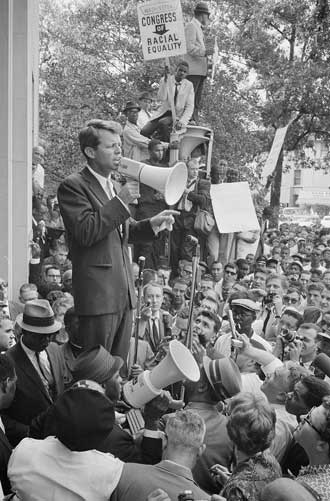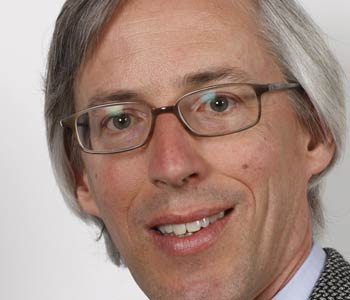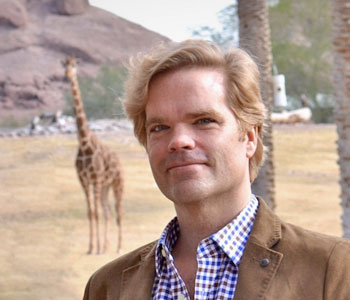Patricia Sullivan
Justice Rising: Robert Kennedy’s America in Black and White
Harvard Universty Press
544 pages, 6 1/8 x 9 1/4 inches
ISBN 978 0674737457
Justice Rising places Robert Kennedy squarely at the center of the movement for racial justice in the 1960s. In reconsidering Kennedy’s public life, the book offers a fresh account of how history, race, and politics converged during the sixties.
Bobby Kennedy emerged on the political stage just as mass protests erupted across the South. As Attorney General and his brother’s closest adviser, he grasped the moment. He assembled a brilliant team of lawyers and was prepared to put the weight of the federal government behind school segregation rulings and the enforcement of voting rights. Less than four months into the Kennedy administration, when an interracial group—the Freedom Riders—tested their right to travel together across the South, RFK confronted the white defiance and state-sanctioned violence dedicated to maintaining segregation. Speaking of government officials in Alabama, he told an aide, “those fellows are at war with this country.”
RFK was also keenly focused on the poverty, segregation, and criminal justice abuses that plagued urban Black communities. He helped establish community-based youth programs in sixteen cities across the country and visited each one of them, seeing conditions firsthand. Early in 1963, he referenced the betrayal of Emancipation’s promise, describing a racial crisis “100 years in the making.” The consequences of racial discrimination, he said, were massive and “carry on for generation after generation. To face this openly and squarely is the challenge of the decade.”
A prevailing view is that the Kennedy brothers did not do enough to support the Civil Rights Movement. My book challenges this orthodoxy. By focusing on the depth of the Black Freedom struggle that crested in the sixties and the racial divide that structured American life and politics, it illustrates how John and Robert Kennedy faced the national dimensions of a racial crisis that gripped the nation. During the administration’s brief tenure, they responded to the movement’s demands as well as to the opportunities it created for bold leadership. In the spring of 1963, at considerable political risk, JFK publicly aligned the administration with the struggle of African Americans for full equality.
John Kennedy’s assassination in November 1963—a shattering experience for RFK—ended a remarkable partnership. Together they led in crafting historic civil rights legislation and forged the bipartisan coalition critical to its passage the following summer. By then, Kennedy recognized the limits of law in uprooting the racial inequality that permeated American society.
Elected to the U.S. Senate from New York in November 1964, Kennedy became a public figure in his own right, just as the country entered one of its most tumultuous periods. Lyndon Johnson’s dramatic escalation of America’s involvement in Vietnam undermined his War on Poverty and fueled a massive anti-war movement while cities across the country became racial battlegrounds—all factors that ultimately pitted RFK against LBJ.
Race was at the center of Kennedy’s widening vision, one that encompassed the desperate poverty in cities, in the Mississippi Delta, on Indian reservations, in the coal fields of Kentucky, and among migrant workers. He exposed these conditions and pushed for expanded anti-poverty programs. The raw, oppressive environment in urban areas consumed his attention and fueled his creative energy—as seen in the community-controlled development project he pioneered in Bedford Stuyvesant. It has been described as “Black Power in Action.”
The book concludes with Kennedy’s run for the presidency in 1968, a barnstorming campaign through all parts of the country—a fleeting glimpse of the possibility and urgency of that moment, which ended tragically with his assassination and that of Martin Luther King Jr.
My last book was a history of the early decades of the NAACP, from its founding in 1909 up through the 1950s. Lift Every Voice: The NAACP and the Making of the Civil Rights Movement explored how several generations resisted and challenged the color line, not only in the South, but in towns and cities across the country, as African American migration reshaped America’s racial landscape. It is a story of how legal brilliance, grassroots organizing, the strength of Black culture and institutions, interracial alliances, and a fundamental faith in democracy built and sustained long-term struggles to uproot racism and advance justice. It is also a story of the deep and tangled roots of racism in America, and the ignorance, indifference, and opportunism that accounts for its resilience.
My work on the book left me with questions about the civil rights struggles of the sixties. When protests drew national attention to segregation and white violence in the South, nearly half of African Americans lived in the North and West, in communities where segregation was deeply entrenched. Unlike the South, segregation was not mandated by law in northern urban communities. It was created and enforced by public policies, private interests, and white racism, resulting in intolerable conditions: poverty, crowded housing, run-down schools, high unemployment, and abusive policing.
The history of the racial justice struggles of the early 1960s has focused largely on the South, but that is only half the story. Bobby Kennedy was uniquely positioned—as attorney general, presidential advisor, U.S. Senator, presidential candidate—to see racial conditions and confront the ways race structured all facets of American life. His concerns about youth, particularly those caught up in the criminal justice system, drew him to poor urban areas. A Black civil rights activist described him this way: he went, he saw, he listened, he grew.
When the legislative triumphs of the Civil Rights Movement were quickly followed by uprisings in northern cities, Kennedy was not surprised. The Watts uprisings in 1965 lasted five days and thrust the urban crisis to the center of national attention. Public figures across the spectrum responded with calls for law and order, tapping into the pernicious equation of Black identity and criminality. Kennedy was unusual in that he actually sympathized with those who were setting cities on fire. “There is no point in telling Negroes to obey the law,” he said. “To many Negroes, the law is the enemy … it has almost always been used against him.” The crux of America’s racial crisis, he insisted, was lodged in history, and sustained by ignorance and prejudice.
By the end of the 1960s Kennedy and Martin Luther King Jr., aligned in opposition to the Johnson Administration’s war in Vietnam, were both speaking out forcefully against racial and economic injustice. In 1968, a time of deepening racial turmoil and division, RFK’s presidential run and King’s Poor People’s Campaign represented a leap of faith, their final effort to bend the country in a new direction.
Some readers will probably turn to the images first—and that is a good place to start. There are two inserts that tell the story in pictures. We see Kennedy on the phone at 2 a.m. with an aide in Montgomery during the peak violence of the Freedom Rides; Bob Moses working on voter registration in Mississippi; Kennedy visiting with Black children whose schools were closed for four years in Prince Edward County, Virginia; Kennedy as a presidential candidate speaking to a rally organized by the Watts Writers Workshop in Los Angeles; and RFK walking through the rubble in Washington DC after the city exploded in the wake of King’s assassination.
One of my favorite chapters is Chapter 12, “Suppose God is Black.” It opens with two defining and overlapping events: Robert Kennedy’s five-day long trip through South Africa and the “March against Fear” in Mississippi to promote voter registration. Following a police assault and arrest in Greenwood, Mississippi, Stokely Carmichael famously issued the call for Black Power. It had an electrifying impact. Mainstream media, moderate civil rights leaders like Roy Wilkins, and most of the political establishment condemned Black Power as racist and divisive. Kennedy did not. He praised the March for showing that Black citizens would keep up their efforts “until they establish equality.” At the end of August, Look magazine published an article by Kennedy on his trip to South Africa entitled, “Suppose God is Black.” The title and his image were prominently featured on the cover. It was a bold statement by a man of deep faith that invited a different angle of vision during the summer of Black Power.
Focusing on the summer of 1966, the third consecutive summer of urban uprisings, the chapter crystalizes fundamental differences between Robert Kennedy and Lyndon Johnson. It looks beyond the personality differences that absorbed the media and biographers and historians. The stark differences in how they responded to the racial crisis in the cities was a key factor in Kennedy’s decision to challenge LBJ for the presidency. Johnson had become obsessed with winning the war in Vietnam to the detriment of the War on Poverty. He saw the urban crisis as a law and order problem and saw the solution as more vigorous law enforcement.
In the fall of 1966, Kennedy told 15,000 students at UC Berkeley that America had one choice: “face our difficulties and strive to overcome them, or turn away, bringing increasing repression, increasing human pain, and civil strife.” No national concern was more pressing, he emphasized, than “the revolution within our gates, the struggle of the Negro American for full equality and full freedom.”
On June 14, 1963, Bobby Kennedy addressed protesters gathered outside the Justice Department, who called for federal action to end segregation in the South. By this point, Justice Department lawyers were hard at work drafting a strong civil rights bill. Library of Congress.

I completed Justice Rising at a time of nationwide racially charged protests with direct echoes of the 1960s. Once again, mass protests have focused national attention on rampant racial injustices and triggered new demands for change.
My book speaks to this guardedly hopeful moment. In the late 1960s, aggressive policing and mass incarceration ultimately prevailed as the response to the urban rebellions sparked by lack of opportunity, substandard conditions, and unjust policing. But that could not diminish what was achieved during the sixties and the legacy that endures. One of the most powerful social movements in American history—through protests, organizing, and insistent demands—broke through, elevating the consciousness of many and creating both the pressure and opportunity for government action to dismantle segregation. At the same time, the Black freedom struggle grew, exposing the deep roots of racial inequality and changing American culture in fundamental ways. America is once again in a racially charged moment and this is a history with crucial lessons for a continuing struggle.
Robert Kennedy’s public life was forged by the racial reckoning of the sixties. This is a central theme of the book and I hope it will inform how he is remembered. His capacity to see and to grow is testimony to what is possible. After Kennedy’s death, James Baldwin, with whom he had a charged exchange as Attorney General, reflected on the essence of who RFK was. He had a mind “that could be reached,” Baldwin commented. “He was somebody in the twentieth century with enough passion and energy and patience.” Such qualities are essential to meeting the challenges we face today.




We don't put paywalls. We don't distract you with ads. We don't sell your data.
Please help to keep this running!